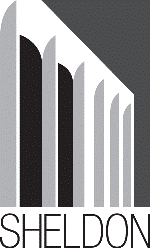Fine and Performing Arts, Hixson-Lied College of

Sheldon Museum of Art: Catalogs and Publications
Date of this Version
1974
Citation
SHELDON MEMORIAL ART GALLERY UNIVERSITY OF NEBRASKA - LINCOLN September 17 - October 13, 1974
Abstract
PREFACE
In early America most quilts were made for utilitarian purposes. Later, when time and fabrics became more plentiful, quilt making developed into an art form which flourished during the 19th century and continues to do so today. Within the broad definition of "patchwork," three types are represented in this exhibition-pieced, applique and crazy.
Pieced quilts are made from materials cut in geometric shapes and put together in pattern blocks. These blocks are repeated to form the quilt top. The designs were often of political, historical or religious events, but many also were associated with abstract visual ideas and images. "Rocky Road to California" and "Lincoln Quilt" are examples of the first category; "Indiana Puzzle" and "Log Cabin" the second; "Star of Bethlehem" and "Jacobs Ladder" the third. Names, however, varied for the identical pattern in different localities.
Applique quilts are made by cutting patterns and sewing them to a base cloth. Usually these were not made for regular household use, but rather tended to be the "pretty" or "best" quilts and had flowers, trees, birds or fruit as motifs.
Crazy quilts are made of odd-shaped bits and pieces of material put together in a random pattern. These reached their artistic height in the Victorian era when fabrics such as silks and velvets replaced cottons and flannels. Creative stitchery fills in certain patches and lines the edges of others. Crazy quilts were often used as decorative throws on couches.
All the quilts in this exhibition belong to either museums or individuals in Nebraska and many were made by native Nebraskans. Of special note are the five quilts created by Mrs. Grace Snyder of North Platte.
Almost three hundred examples were assembled for consideration and from this number fifty-five were selected solely on their merits as works of art. Their patterns, colors and materials illustrate the wide range quilting provides for individual creativity. Considerations relating to workmanship, condition and age were not used as criteria of primary importance. From this selective sampling it can be seen that "quilt making" is an art form of quality and importance.
INTRODUCTION
A quilt is a bedcover, that's for sure, but it is not a coverlet nor is it a counterpane. It is usually made of two thicknesses of fabric, the top or front pieced together from a variety of materials in a number of colors; the back or lining is generally of one piece in one color, the two frequently but not invariably sandwich a layer of soft padding and the whole thing is stitched through from front to back in a pattern which may conform tei the pieced design or may, on the contrary, follow its own pattern in a kind of visual counterpoint. The pattern can be further embellished with needlework of various kinds, ornamental or commemorative, and, after generations of practice and invention, quilt making has achieved an iconography of its own reflecting the domestic inspirations of uncounted, anonymous, female artists. One has only to recite the names of the traditional patterns to sense the interplay of skill and imagination which makes a quilt into a work of art.
At their functional level they have kept the sleeper warm. In addition they have filled the role of social coordinator. They have been the inspiration of virtuoso needlework as well as creative invention. They have been valued elements in a dowry and part of an inheritance handed down through the generations of a family. At their most extraordinary levels of accomplishment they have been status symbols, entirely divorced from the vulgarity of use. Nowadays they are apt to hang on a wall like a painting and to even hang on the walls of an art gallery, their apotheosis achieved.
All these considerations have come into play in the organization of this exhibition and it is more than a pleasure to acknowledge the hard work of the members of the Lincoln Quilters Guild and the staff of the Sheldon Gallery in bringing to public attention the achievements of this traditional anonymous art as it exists in the public and private collections of Nebraska. Fortunately, some of the makers are known to us, some of them are giving the art its contemporary form, and we are happy to give them the recognition they deserve.
As a gallery-community collaboration it is a pleasure to acknowledge in particular Mrs. Velda Coffey, who first brought the idea of the exhibition to our consideration, Mrs. Mary Ghormley, Mrs. Louise Howey, Mrs. Jean Harnsberger, Mrs. Sally Campbell all of whom provided the knowledge, energy and enthusiasm which is so necessary to the realization of such projects. Our thanks as well to Mrs. Imelda DeGraw of the Denver Museum, who brought a trained curatorial eye to the selection of examples to be shown, to Jon Nelson whose installation took full advantage of the visual amenities of the Sheldon Gallery and to Mrs. Beth Gutcheon who brought to the opening workshop the essential warmth of the creative process itself. Lastly, the catalogue which provides a permanent record of the event, is in no small way the result of the fastidious professionalism of Kaz Tada and Paul Bateman.

